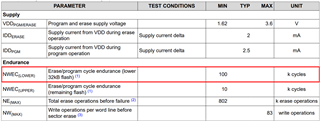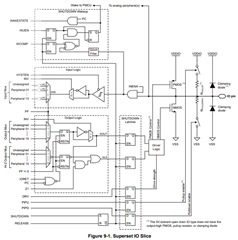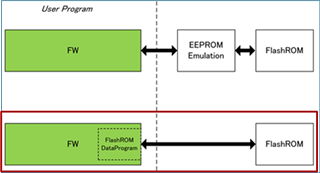Other Parts Discussed in Thread: SYSCONFIG,
Tool/software:
Hi team,
1. They would like to use the flash memory area enclosed in the red frame below as a general DataFlash instead of EEPROM emulation.
Do you have any materials or sample sources for that?

2.Customer use the PA15 pin by dynamically switching between output-H, output-L, and OpenDrain.
When OpenDrain is used, a voltage of about 1V is applied to the pin.
Is there a problem? They think it would be good if the input was disabled with INENA of IOMUX below in OpenDrain settings but they could not confirm it.

Thank you in advance.
Best regards,
Kenley


